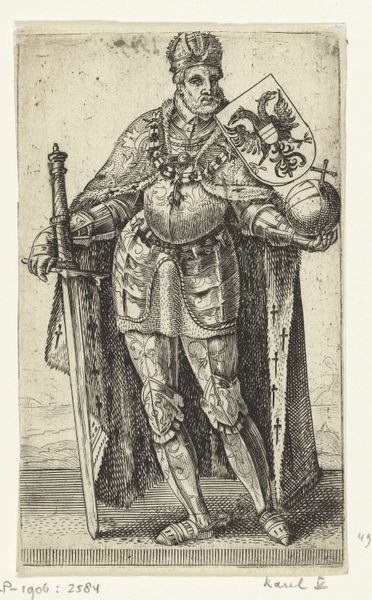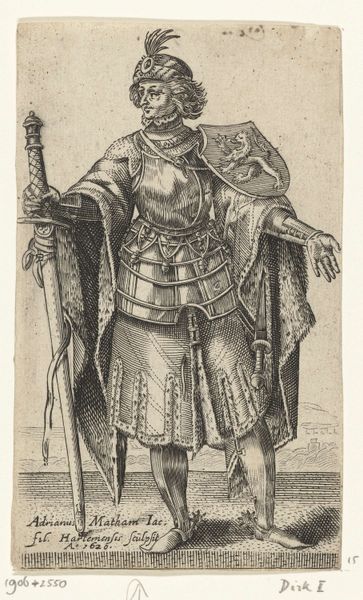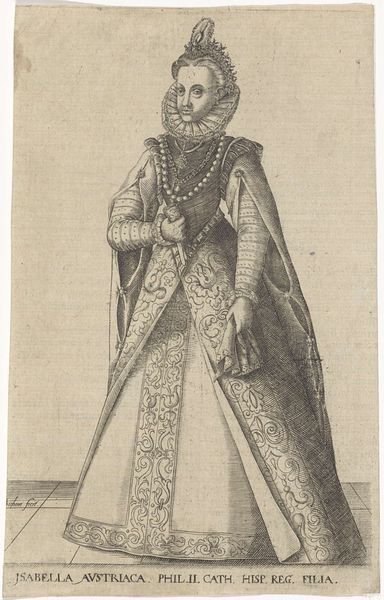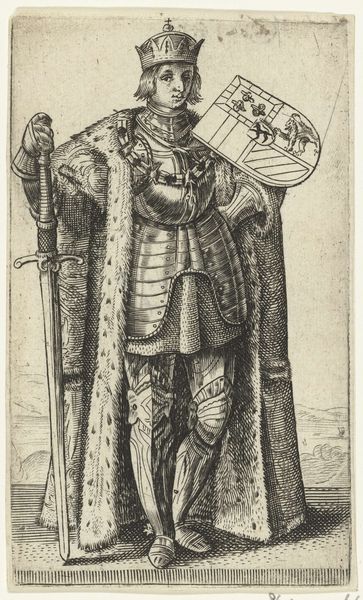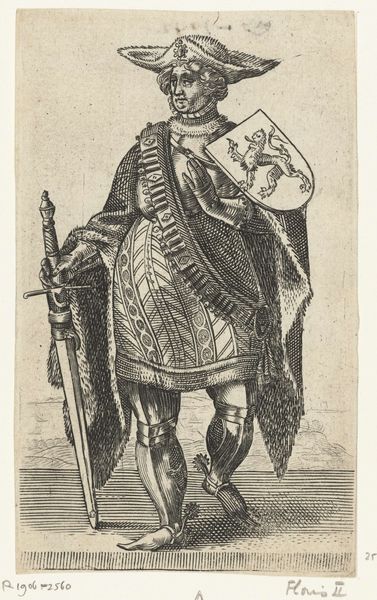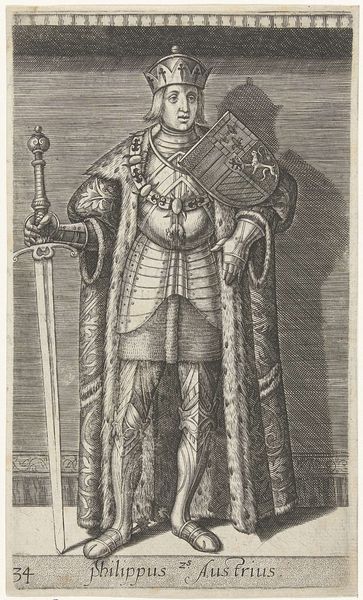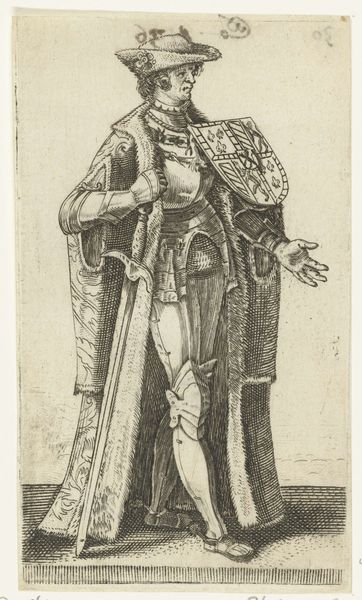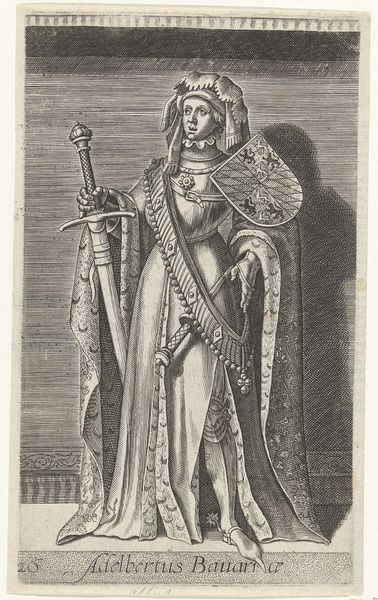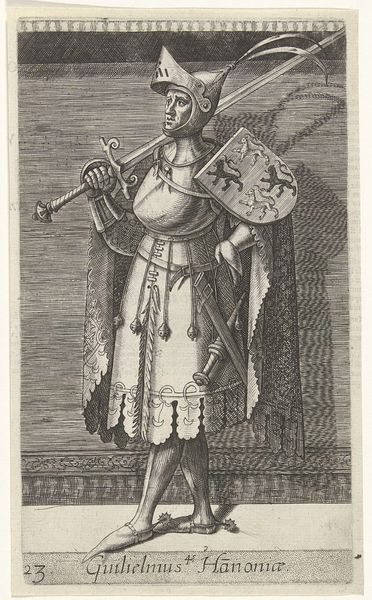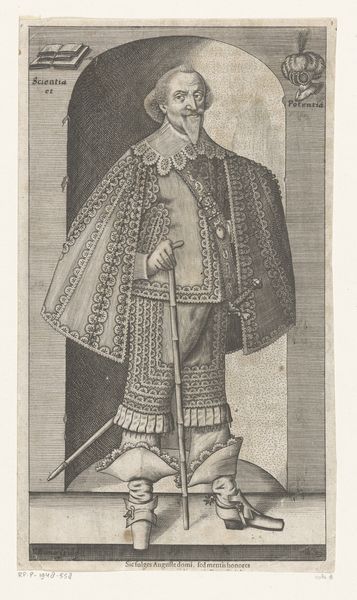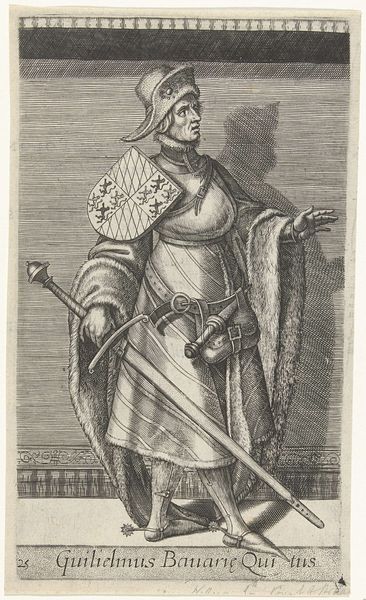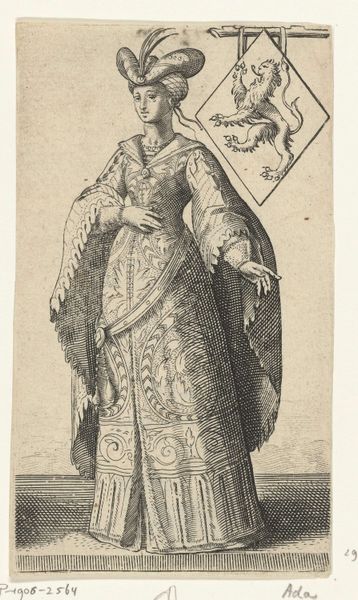
Portret van Albrecht van Beieren, graaf van Holland en Henegouwen 1620
0:00
0:00
print, engraving
#
portrait
#
baroque
# print
#
old engraving style
#
history-painting
#
northern-renaissance
#
engraving
Dimensions: height 130 mm, width 80 mm
Copyright: Rijks Museum: Open Domain
Curator: Here we have Adriaen Matham's 1620 engraving, "Portret van Albrecht van Beieren, graaf van Holland en Henegouwen," which translates to "Portrait of Albrecht of Bavaria, Count of Holland and Hainaut." It’s part of the Rijksmuseum collection. Editor: The first thing that strikes me is the meticulous detail, considering it's an engraving. And the solemnity of the figure, standing armed with both a sword and a shield, really conveys power, even if rendered in monochrome. Curator: Indeed. Matham was working within established portrait traditions of the time. Consider the societal function of such imagery – it’s meant to project authority and legitimacy. Note the inclusion of his coat of arms on the shield. The portrait aims to situate Albrecht within a specific lineage and right to rule. Editor: That coat of arms is fascinating, isn’t it? The heraldic symbols speak volumes. And beyond its decorative function, I wonder what stories those particular symbols are trying to tell us about the man's legacy. A kind of visual autobiography intended for posterity, perhaps? Curator: Precisely. The sword also acts as more than just an indicator of Albrecht’s status as a nobleman. Swords are symbols of justice and resolve, communicating that he would have been viewed by his contemporaries. The print itself acts as a political artifact, produced in multiples. Editor: So, while the original intention might have been one of straightforward commemoration, the images have layered meanings as these circulated. In what ways do you imagine these types of portraits influence broader audiences, generations after they were made? Curator: It perpetuates a very specific, deliberately constructed narrative, both for Albrecht's time and beyond. Such images act as powerful reminders of social structures and power dynamics. As the portrait traveled, it becomes a complex, evolving symbol far beyond the individual it depicts. Editor: So, as an echo, what began as a straightforward portrait evolves into a testament about both the Count of Holland and also the way power likes to see itself presented and preserved.
Comments
No comments
Be the first to comment and join the conversation on the ultimate creative platform.
